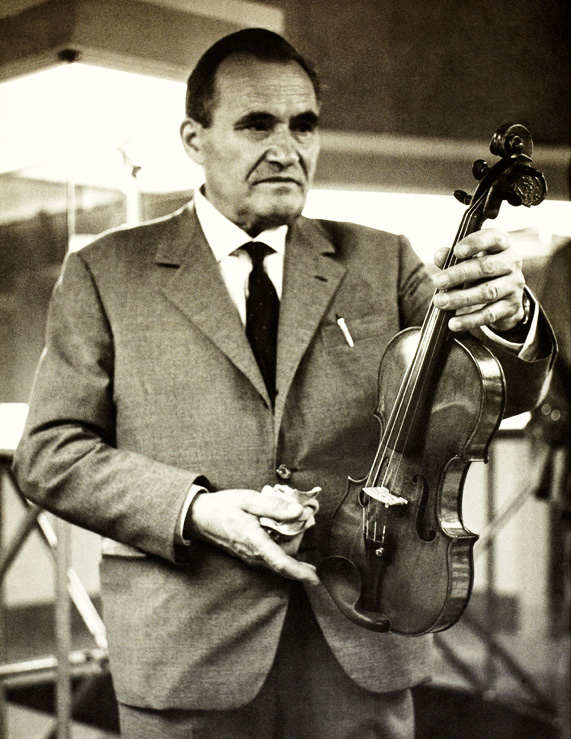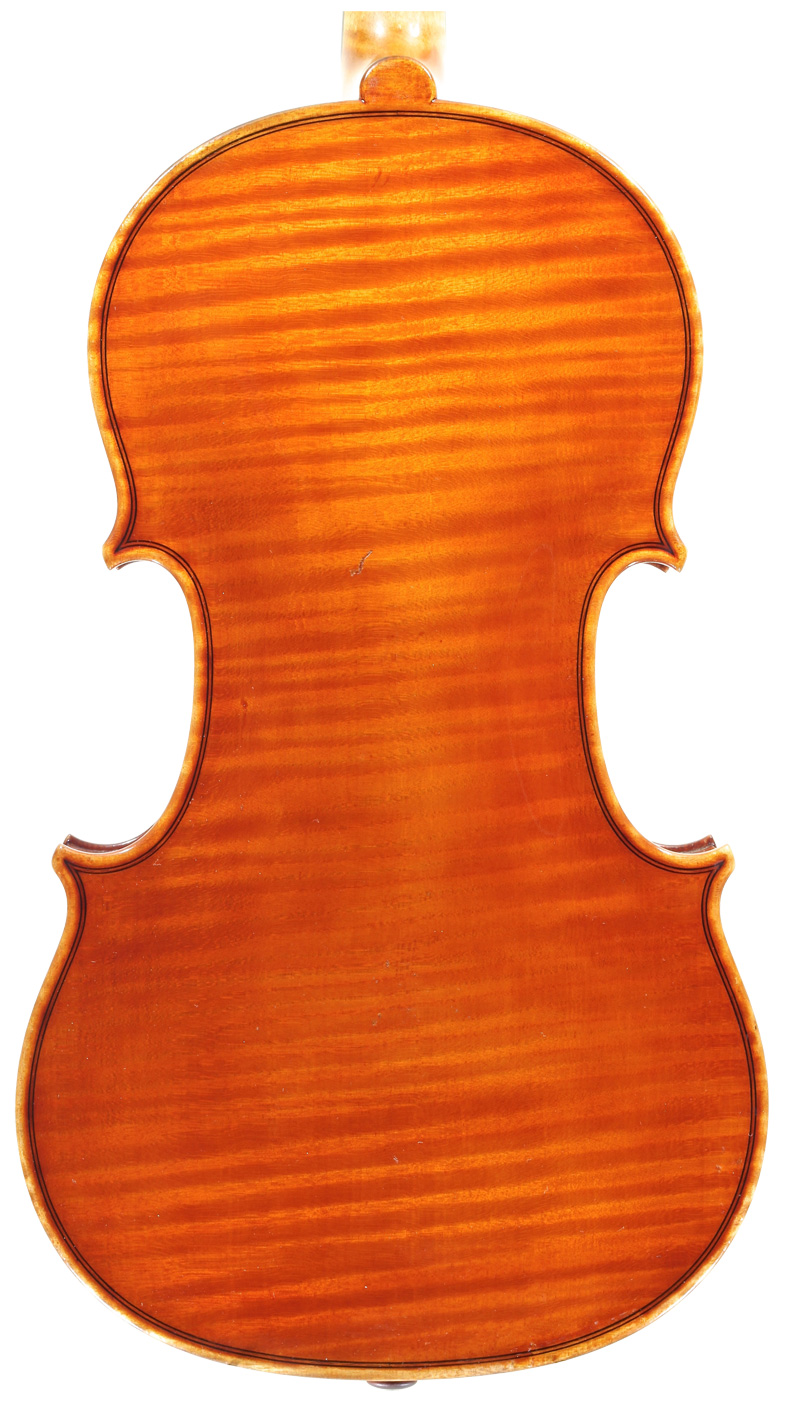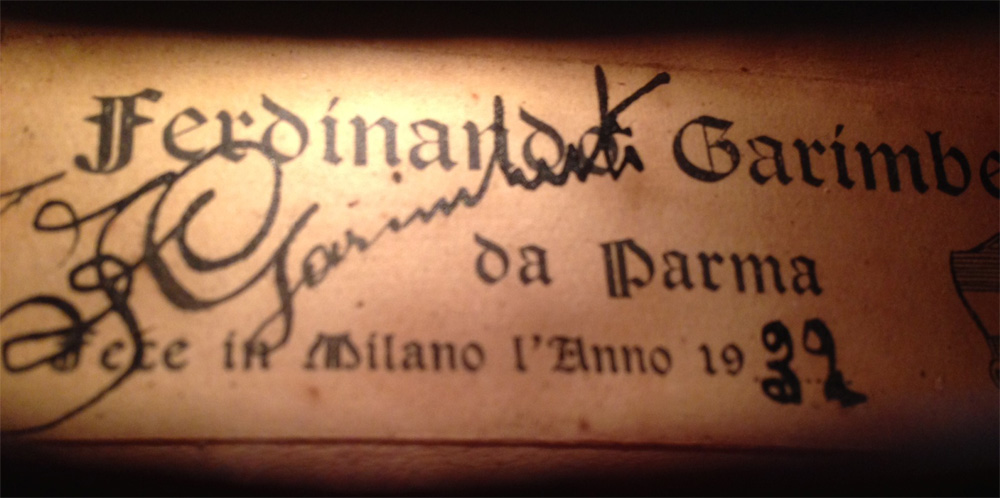|

Ferdinando Garimberti (1894-1982) was born in Parma, Italy, and moved to Milan in 1902. He was following his father's footsteps as a blacksmith but ran a hotel with his wife after their marriage. Because Garimberti was an amateur cellist, he became friendly with Romeo Antoniazzi, who was a regular guest at the hotel, and later became Romeo's apprentice as a stringed instrument maker.
Because he was trained as a blacksmith, he knew how to handle wood-working tools and rapidly improved his skills, furthering his training with Romeo's older brother Riccardo Antoniazzi. He then went onto become an apprentice to Leandro Bisiach, who established a hugely successful instrument-dealing business in Milan, but Garimberti was soon drafted in the army in Turin.
After the war, he was not making instruments, but when Bisiach contacted him a few years later, Garimberti moved back to Milan to work at Bisiach's workshop, where he trained under Giuseppe Pedrazzini. Garimberti not only showed talent in making instruments but in repairing as well. However, because he was a stubborn craftsman, he was not happy making just the scrolls and some parts of instruments for Bisiach's workshop. His values and personality differed from that of Bisiach's, who excelled in business and sales, that Garimberti started his own shop in Milan in 1920 after being recommended by successful musicians. (In the letter that was found years later, Garimberti clearly writes that he was an apprentice to Antoniazzi brothers and Pedrazzini, but not Bisiach.)

The late 20's was Garimberti's Golden Period, when he was making instruments inspired mainly by the finest works of Amati and Stradivari, bringing back the Cremonese style to Milan. His works from this period show consistency within the beautiful form, well balanced medium arch, sharp but elegant f-holes and the finest attention to detail in the purfling and the edges. After winning his first prize in a competition in Rome in 1927, he went on to win prizes in Rome in 1931 and three prizes in three different categories in Cremona in 1937. Also winning another prize in Cremona in 1949, Garimberti became one of the leading makers in Milan.

He lists Giuseppe Ornati as one of the makers that he truly respects and their works show many similarities, making them indeed the leading Milanese makers. They both became teachers at the International Violin Making School in Cremona, training many students including Giovanni Battista Morassi.
The instrument being introduced here was made in 1932, during Garimberti's Golden Period, and is text book perfect, without too much character or uniqueness. What is difficult in violin making is to remain consistent and simple and to not do unnecessary things, and because his works show those qualities, he is still very well respected by violin makers today.
| |

